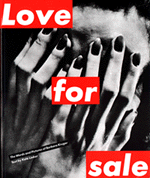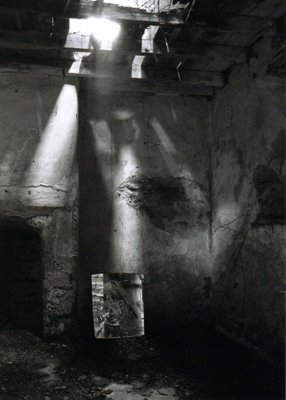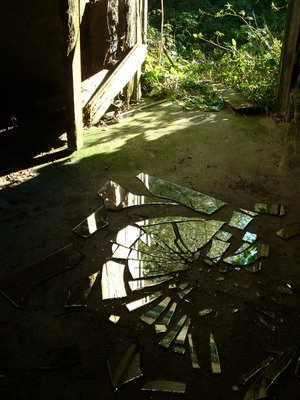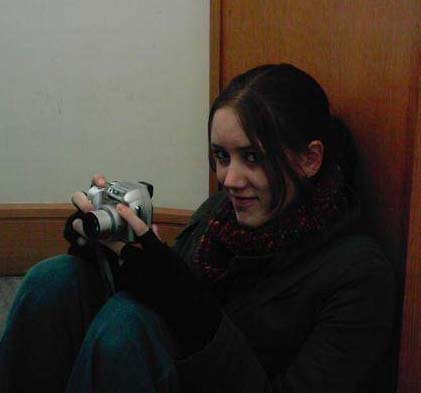Lecture notes taken from Modernity and Modernism on 12/10/2005 plus my own brain 'blaahs' - yes that is a technical term
'Modern'
Of or relating to recent times or the present: modern history.
Characteristic or expressive of recent times or the present; contemporary or up-to-date: a modern lifestyle; a modern way of thinking.
Of or relating to a recently developed or advanced style, technique, or technology: modern art; modern medicine.
Avant-garde; experimental.
'Modernity'
The state or quality of being modern
'Modenity'
Modern thought, character, or practice.
Sympathy with or conformity to modern ideas, practices, or standards.
A peculiarity of usage or style, as of a word or phrase, that is characteristic of modern times.
often Modernism The deliberate departure from tradition and the use of innovative forms of expression that distinguish many styles in the arts and literature of the 20th century.
DefinitionsModernity: The idea od 'modern' then, is linked to the idea of progress. The idea of progress is central to our understanding of 'modernity' and the significant changes that took place broadly between 1750-1950. This process of modernisation did not, obviously, happen overnight, although we can fix it historically as being aligned to the processes of industrialisation and ubranisation. Central features of 'modernity' are: The City, Communication, Progress, and Reason & Rationality. in which we see progress and developments in all areas such as the creation of telegraphs, scientific processes, and a movement from reliance upon the church to people relying more on the Government and its policies to influence, change and improve our lives.
Moderism: Is the term used to describe the cultural expressions of modernity in relation to the experience of modernity. Theoretical features identified with modernism in art & design include: Social Morality, Truth, Technology, Function, Progress, Anti-Historicism, Internationalism, Transfomation of Consciousness and Theology.
the term Modern relates directly to: Contemporary and was coined by John Rushkin (1819 - 1900) a modern painter from the PreRaphaelites.
It is used to suggest 'art of its day'
in the 20th Century it meant 'new' and thought of as better than before: improved, up to date.
Modernity is officially said to be between 1750 and 1950, however, some would say we are still in a period of modernity.
Industrialisation is a feature of Modernisation in which people moved from farming to factory production, and factory work became the most common form of work. Industrialisation also saw a great improvement in transportation and communication with the invention of electricity.
Urbanisation was seen with the effect of a growth in city sizes, people were moving from the country side to be closer to the city in which they thought they would improve their quality of life with the new leisure centres and cinemas and more well paid job prospects. In the 18th Century factories were being run 24/7 - no longer were we ran by the seasons. By the 19th Century time became standardised with what we know now: Greenwich Mean time.
Enlightenment was a period in the late 18th Century when scientific/philosophical thinking made leaps and bounds in which people became more scientific and less religious: Secularisation.
The modern experience relied on being able to grasp peoples attention so the 1800's saw the realisation of psychology and peoples attention spans and the use of advertising to do so, it also saw the rise of the science of 'Psysionomy' which was the perception of people around you and directly links in with psychology and advertising. One problem found with larger cities was a sense of alienation of the people as they worked towards this 'better world'.
Modernisim emerges out of the subjective responses of artists/designers to modernity (subjective experience - experience of the individual in the modern world)
Modernism in Design:
Anti-Historicism - campaigning against using old styles to influence work.
Truth to materials - appropriate to form - using materials that work for the design despite apperance.
Form follows Funtion - similar to truth to material in which the design was kept as simple as possible working to function rather than apperance.
Technology - created new materials for artists and designers to play around with such as concrete/steel/reinforced glass/aluminium/plastics.
Mass production - items made quickly and cheaply which were more widely accessible.
Internationalism - A language of design that could be recognised and understood on an international basis.
Modern - not a neutral term, suggests improvement and novelty.
Modernity - 1750-1950, social and cultural experiences of people.
Modernism - Range of ideas that sprang from Modernity.
Artists/Designers
CaillebotteBauhausMonetManet





















































